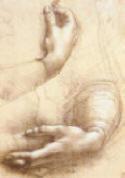BIO210 Weekly Guide #7
UPPER APPENDAGES;
ARTHROLOGY

After completing this laboratory you should be able to:
1) Identify the bones of the upper extremity, as well as the major surface features of those bones
2) Identify the muscles of the upper extremity, providing the origin, insertion, and actions or each
3) Fully classify any joint of the axial skeleton or upper extremity by degree of motion, basic structure, and specific range of motion ( for synovial joints)
4) Describe in detail the major structural elements of a synovial joint
Guide to Gross Anatomy Guide to Histology Guide to Physiology
Outline
I. Arthrology {FAP Ch 9}
A. Classification {FAP 9-1, Table 9-1, 9-2}
by movement
synarthrosis - fixed
amphiarthrosis - semi-movable
diarthrosis - movable
by structure
synosteosis - suture or fusion e.g. skull, innominate
gomphosis - socket teeth in jaws
syndesmosis - fibrous or inteross. lig. infant skull, radioulnar
synchondrosis - cartilaginous (hyaline) costochondral, sternocostal 1
symphysis - fibrocartilage symphysis pubis
synovial extremities, spine, jaw
B. Synovial Joints {FAP 9-2}
structure
bone epiphyses, articular cartilages, synovial membrane, synovial
cavity, synovial fluid, joint capsule, ligaments
range of motion (type)
ball & socket e.g. shoulder, hip
condyloid wrist, knuckles
saddle thumb
hinge elbow (ulnohumeral), knee, jaw
pivot elbow (radiohumeral), atlantoaxial
gliding acromioclavicular, sternoclavicular, costovertebral,
sternocostal 2-7, wrist
II. Upper Appendage Bones {FAP 8-1, 8-2}
A. Pectoral Girdle
scapula
clavicle
B. Arm
humerus
ulna
radius
C. Manus (hand)
carpals
metacarpals
phalanges
III. Upper Appendage Joints {review FAP Ch 9; Table 9-2}
A. Shoulder
sternoclavicular
acromioclavicular
glenohumeral
B. Elbow
humeroulnar
humeroradial
C. Forearm
proximal radioulnar
intermediate radioulnar (interosseous ligament)
distal radioulnar
D. Wrist
E. Carpal-metacarpal
F. Metacarpal-phalangeal and interphalangeal joints
IV. Upper Appendage Muscles {FAP 11-6}
A. Superficial shoulder muscles (axial skeleton to humerus)
B. Muscles of scapular stabilization (axial skeleton to scapula)
C. Shoulder muscles (scapula and/or clavicle to humerus)
superficial shoulder muscles
rotator (musculotendinous) cuff
D. Arm muscles (insert on radius and/or ulna)
E. Forearm muscles
F. Intrinsic muscles of the hand
Gross Anatomy List
Superficial Shoulder Muscles Upper Extremity Bones
(connect Axial Skeleton to humerus): scapula
Pectoralis Major (sternal head) clavicle
Latissimus Dorsi humerus
radius
Muscles of Scapular Stabilization: ulna
Trapezius carpals (x8):
Levator Scapulae scaphoid
Rhomboideus Major lunate
Rhomboideus Minor triquetrium
Serratus Anterior pisiform
Pectoralis Minor trapezium
trapezoid
Muscles of the Shoul;der capitate
(connect shoulder girdle to humerus): hamate
Rotator (Musculotendinous) Cuff: metacarpals (x5)
Subscapularis phalanges (x14)
Supraspinatus sesamoid bones
Infraspinatus
Teres Minor
Other:
Pectoralis Major (clavicular head)
Deltoid
Teres Major
Coracobrachialis
Muscles of the Arm:
Biceps Brachii (long & short heads)
Triceps Brachii (long, lateral, & medial heads)
Brachialis
Brachioradialis
Muscles of the Forearm:
Superficial Common Extensor Group
Deep Common Extensor Group
Superficial Common Flexor Group
Deep Common Flexor Group
Pronator Teres, Pronator Quadratus, Supinator
Muscles of the Hand:
Thenar and Hypothenar Groups
Lumbricales and Interossei
KEY: Know location, action, origin, & insertion (for muscles)
Know location & action (for muscles)
Not responsible for
Guide to Gross Anatomy
The upper extremity bones are: {APL 8-3}
the shoulder girdle - clavicle, scapula
the arm - humerus
the forearm - radius, ulna
the wrist - 8 carpals
the hand - 5 metacarpals, 14 phalanges, sesamoids
This week we are also learning arthrology {APL Unit 9}, the study and classification of joints. For the purposes of this guide and the lab exams to fully classify a joint means to classify it by degree of moveability, by structure, and by range of motion (for synovial joints).
a) Examine a clavicle {FAP Fig. 8-2; APL Fig. 8.21}. The sternoclavicular joint is the only point of articulation between the axial skeleton and the upper extremity. This allows for great flexibility of motion, at the expense of strength and stability. Evolutionarily, this is a holdover from our quadruped ancestors. Think about how a cat, horse or rabbit runs. Why is it important that the upper (anterior) extremity not be rigidly connected to the axial skeleton?
- Palpate the clavicle along its length from the manubrium to the acromion of the scapula. Why is the clavicle so susceptible to breakage, particularly in children?
- Look closely at the clavicle. How could you distinguish a left from a right clavicle?
- Fully classify the sternoclavicular joint.
b) Examine a scapula {FAP Fig. 8-3; APL Fig. 8.20} and locate the following structures and regions:
spine medial border inferior angle
acromion lateral border subscapular fossa
coracoid process superior border infraspinous fossa
glenoid fossa superior angle supraspinous fossa
- Palpate the medial border of the scapula while the arm goes through its full range of motion. Notice how much of the flexibility of motion of the upper extremity relative to the trunk is actually due to the motion of the scapula.
- Fully classify the acromioclavicular joint.
c) Examine a humerus {FAP Fig. 8-4; APL Fig. 8.22}. Identify the following structures and regions:
head intertubercular groove medial epicondyle
anatomical neck deltoid tuberosity lateral epicondyle
surgical neck shaft olecranon fossa
greater tubercle trochlea coronoid fossa
lesser tubercle capitulum
- In order to fully abduct the arm, what additional motion of the humerus must occur? Try it yourself to see.
- Fully classify the glenohumeral (shoulder) joint. Notice that the "socket" of the joint is greatly reduced, compared to the hip joint. This again increases flexibility at the expense of stability, and makes the shoulder much more prone to dislocation.
- The structures contributing to stability of the glenohumeral joint, in order of importance are:
1) rotator cuff muscles
2) accessory ligaments
3) bony components of the joint
4) fibrous capsule of the joint
- Palpate the medial and lateral epicondyles of the humerus.
d) Examine the radius and ulna {FAP Fig. 8-5; APL Fig. 8.23} and locate the following structures and regions:
radius:
head radial tuberosity styloid process
shaft ulnar notch
ulna:
olecranon radial notch styloid process
coronoid process shaft
- Fully classify the elbow. Note that although there are three distinct articulations (radiohumeral, ulnohumeral, proximal radioulnar) with distinct motions, they all share a single synovial capsule and the elbow is classified according to the motion of the forearm relative to the arm (hinge).
- Notice that the radius and ulna are connected at three sites. The proximal and distal radioulnar articulations are synovial. How would you classify the intermediate radioulnar joint (the interosseous membrane)?
e) The wrist {FAP Fig. 8-6; APL Fig. 8.24} is made up of 8 small carpal bones, arranged in two rows. We will not study these bones individually.
- Fully classify the radiocarpal joint.
- Where is the midcarpal joint, and what are the primary motions possible there?
f) Study the hand {FAP Fig. 8-6; APL Fig. 8.24}. The palm of the hand is formed by the 5 metacarpals. Each finger has 3 phalanges, except the thumb, which has 2.
- Fully classify the carpometacarpal, metacarpophalangeal, and interphalangeal joints.
Arthrology Review {FAP Ch. 9; APL Unit 9}
In as much as arthrology is being introduced this week with the appendicular skeleton, we have not yet covered the arthrology of the axial skeleton,. As a final exercise in joint classification, try to classify the joints of the axial skeleton, using a skeleton and your text as guides.
Upper Extremity Muscles
The muscles of the upper extremity may be subdivided according to several schemes. The one used here agrees roughly with most anatomy guides, but you should feel free to organize the muscles for yourself in any way that makes sense to you. If you learn the origin and insertion of a muscle, you should be able to deduce its action. Further, if you can recognize the muscles, and know the skeleton well, you can directly see the origin and insertion for most muscles. After studying the actions of specific muscles, be sure to review with an emphasis on how they interact to animate the upper extremity.
a) Muscles of scapular stabilization {FAP Figs. 11-14 to 11-16; APL Figs. 10.11, 10.12}. These muscles connect the axial skeleton to the scapula. Collectively they move the scapula, while at the same time stabilizing it against the thorax and restricting its motion. Study the origin, insertion and action of the following:
trapezius rhomboideus major serratus anterior
levator scapulae rhomboideus minor pectoralis minor
- Which of these muscles are synergists? Which are antagonists?
b) Superficial shoulder muscle {FAP Figs. 11-14 to 11-16; APL Figs. 10.9 to 10.12}. These muscles are unique in that they connect the axial skeleton directly to the humerus, bypassing the shoulder girdle. Study the origin, insertion, and action of the following:
pectoralis major (sternal head) latissimus dorsi
- Name a synergist for each action of these muscles.
c) Shoulder muscles {FAP Figs. 11-14 to 11-16; APL Figs. 10.9 to 10.12}. These muscles connect the shoulder girdle to the humerus. Study the origin, insertion, and action of the following:
pectoralis major (clavicular head) deltoid
teres major coracobrachialis
d) Rotator cuff muscles {FAP Figs. 11-14 to 11-16; APL Figs. 10.9 to 10.12}. These muscles also connect the shoulder girdle to the humerus and are the major stabilization of the glenohumeral joint. They derive their group name from the fact that they are primary rotators of the arm. Study the origin, insertion, and action of the following:
subscapularis infraspinatus
supraspinatus teres minor
- Is the teres major a synergist or antagonist to the teres minor?
- Name a synergist and an antagonist for the infraspinatus.
- Study the relationship of the deltoid and supraspinatus muscles. Why is the supraspinatus in a better position to initiate abduction of the arm? Why is the deltoid in a better position for most of the range of abduction? Why do you suppose that the supraspinatus is so subject to tearing (rotator cuff tear) in sports requiring full abduction or circumduction of the arm?
e) Muscles of the arm {FAP Figs. 11-16 to 11-18; APL Figs. 10.11 to 10.17}. These are muscles which traverse the arm and have primary actions across the elbow. Study the origin, insertion, and action of the following:
biceps brachii (long & short heads) brachialis
triceps brachii (long, medial, & lateral head) bracioradialis
- Where does the short head of the biceps brachii originate? What are two other muscles which attach to this beak-shaped bony process?
- Study the skeleton to understand why the biceps brachii has a supinating action in addition to its primary actions of flexing the elbow and extending the shoulder.
- Note that there is a prominent bursa associated with the long head of the biceps as it runs through the intertubercular groove. What is the function of a bursal sac?
- Which of these muscles cross both the shoulder and elbow joints?
f) Muscles of the forearm {FAP Fig. 11-18; APL Figs. 10.13, 10.14}. These muscles fall into four prominent groups each of which shares common origins (roughly), insertions, and actions. The groups are named for their relative locations and actions on the wrist and fingers. Study the origin, insertion, and action of the following groups:
superficial common flexors superficial common extensors
deep common flexors deep common extensors
- Note that the superficial groups cross the elbow, while the deep groups do not.
- Note also that there are three muscles in the forearm which do not fit conveniently into these groups, due to somewhat different attachments or actions. They are the pronator teres, pronator quadratus, and supinator. What are the actions of these muscles (the names should provide a strong clue)?
g) Muscles of the hand {FAP Fig. 11-19; APL Fig. 18.14}. These muscles are responsible for opposition of the thumb and fingers, as well as individual motions of the fingers. Study the location and actions of the:
thenar group lumbricales
hypothenar group interossei
Guide to Histology
There is no real histology this month.
Guide to Physiology
There is no real physiological component to this week's lab.
